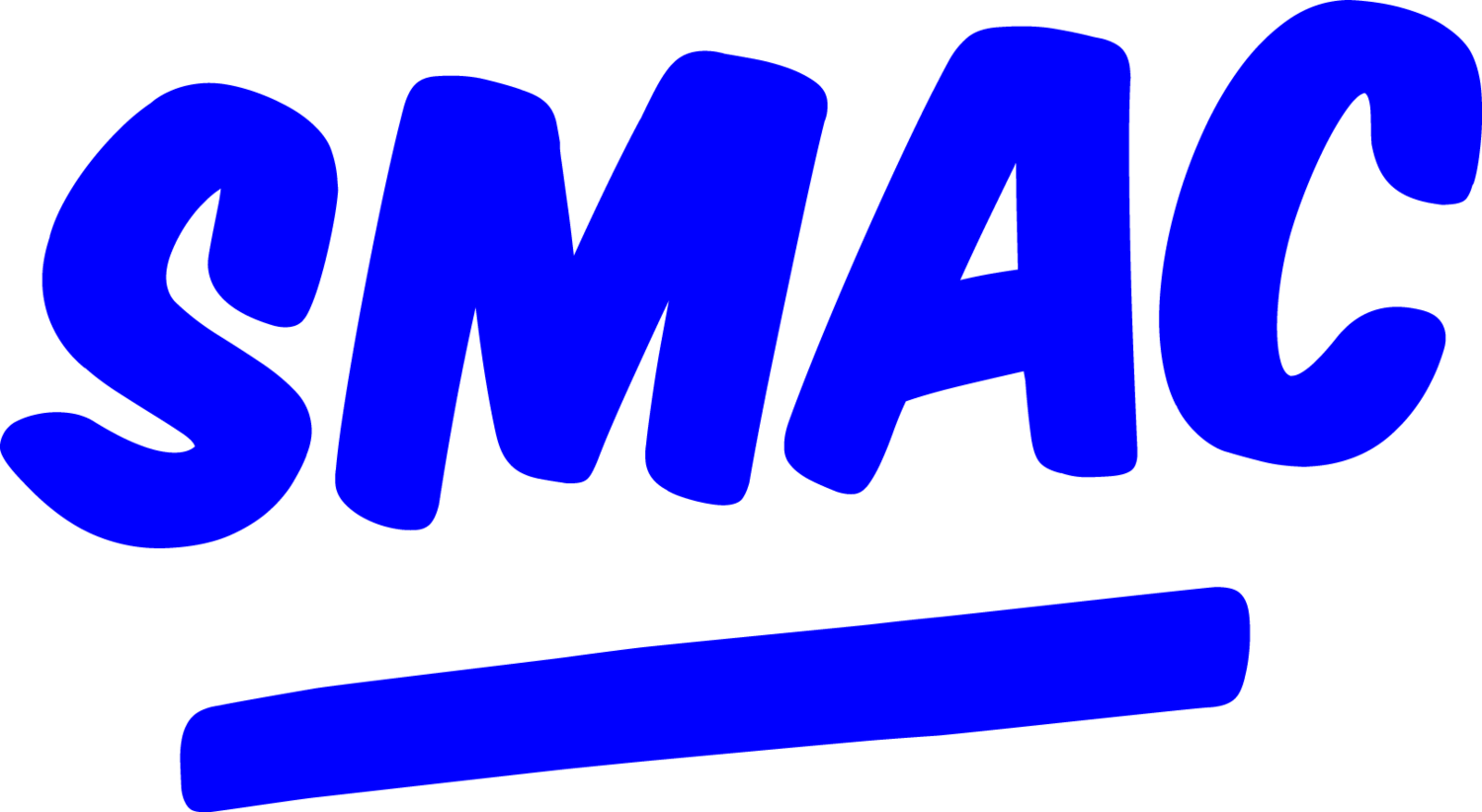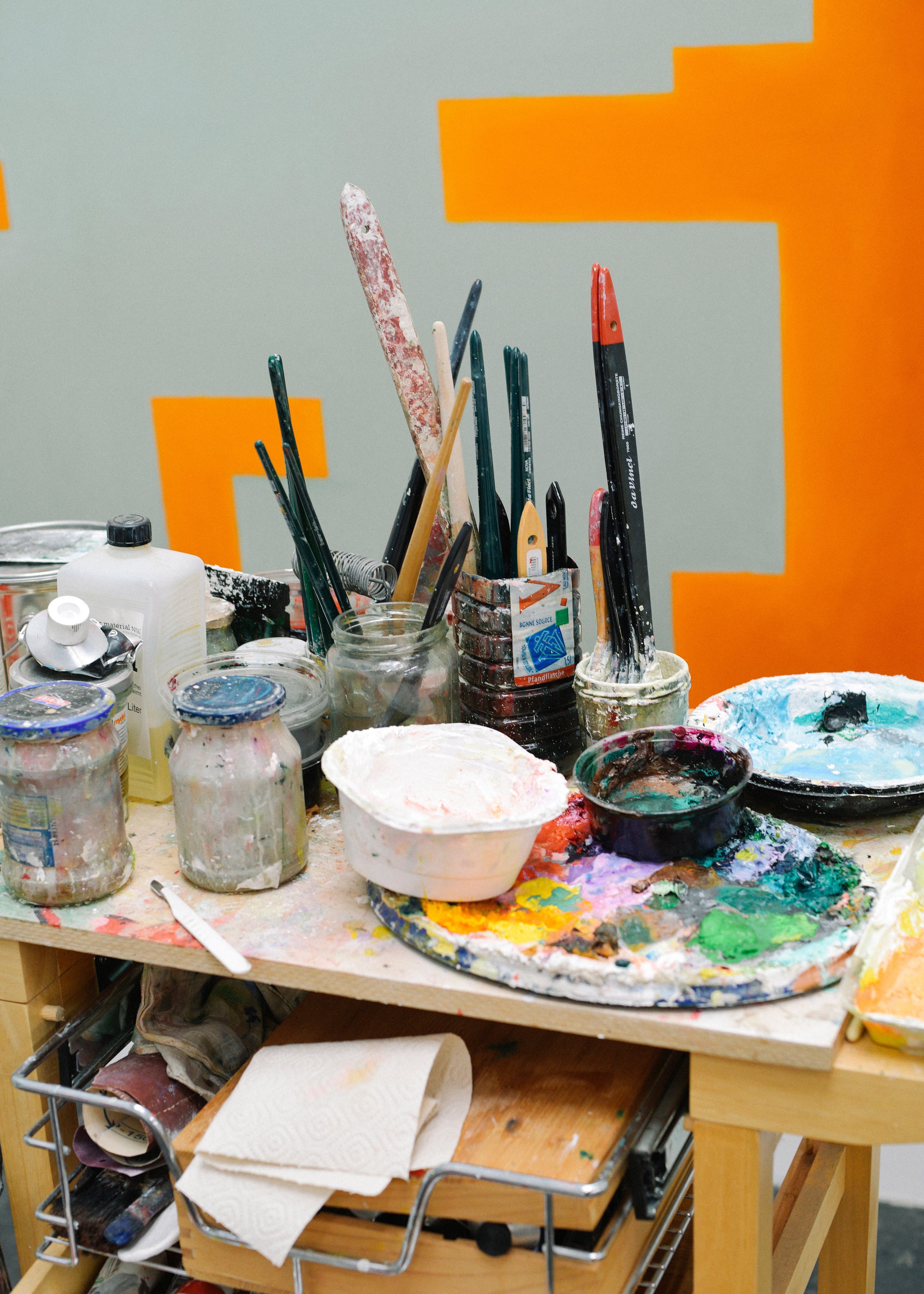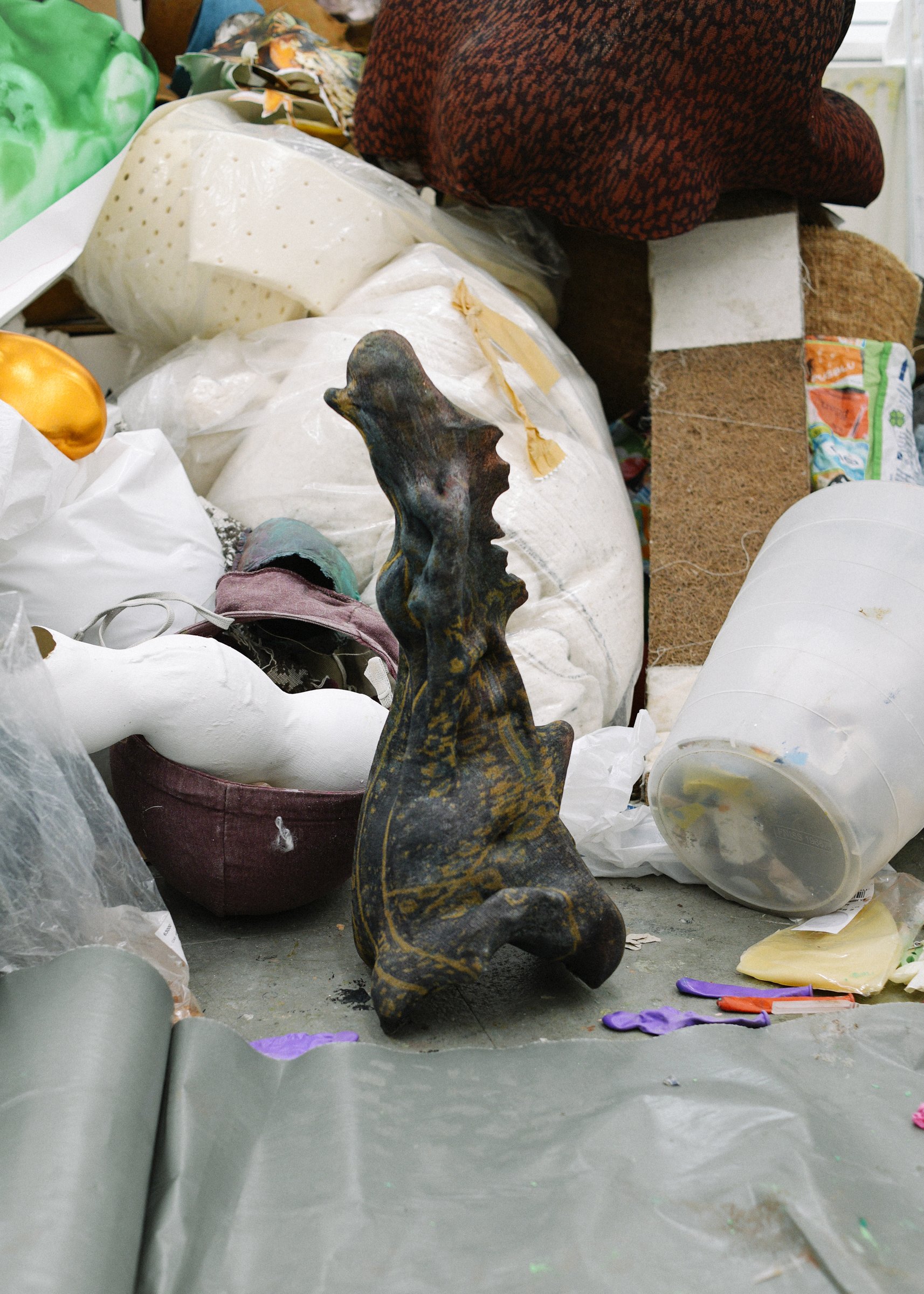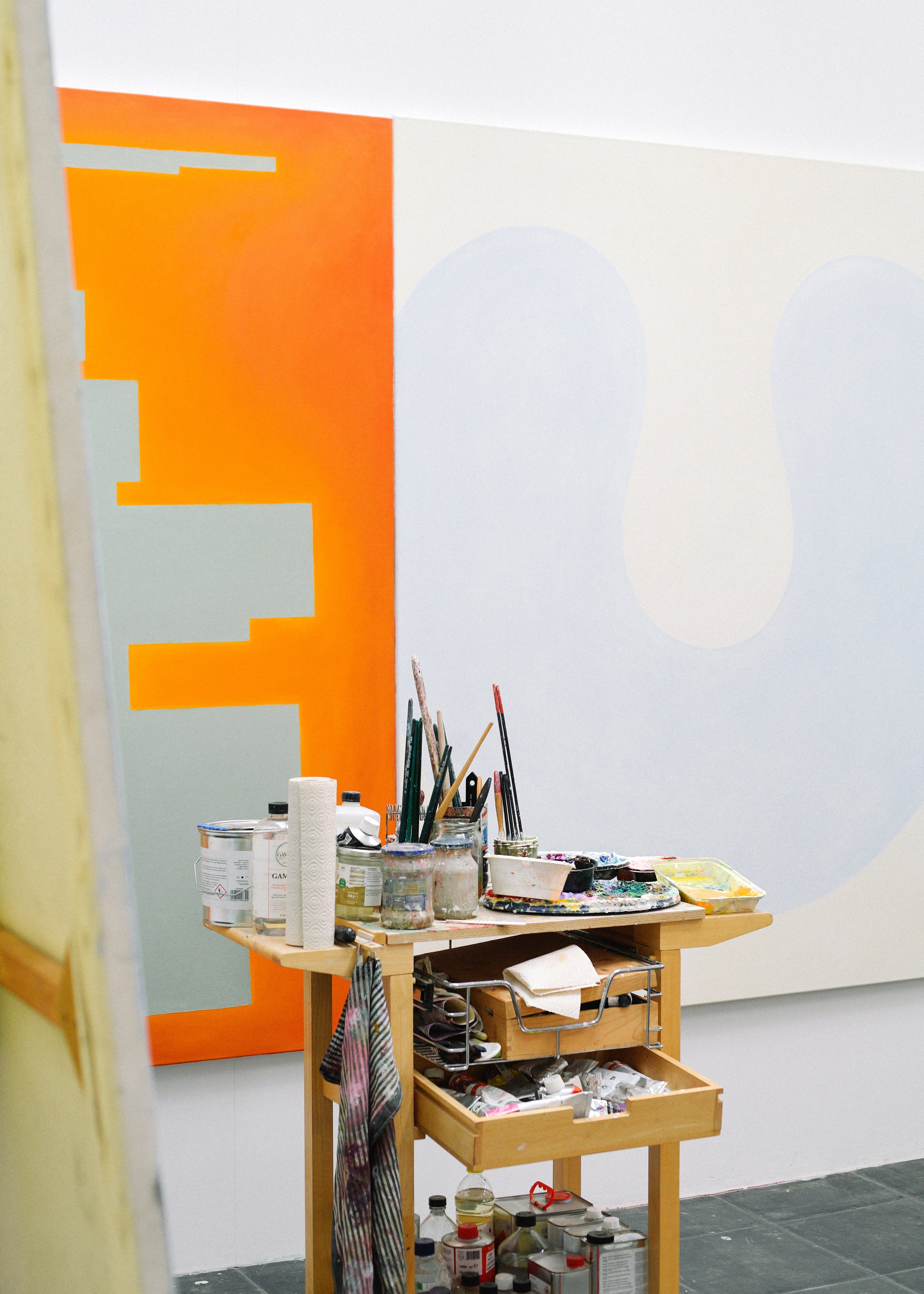Interview with Fee Kleiß + Axel Eichhorst
Parade of Tender // 27th April – 14th May 2023
Axel Eichhorst and Fee Kleiß met through a mutual friend who is also an artist and curator. He found that their works harmonized and suggested that they exhibit together. At SMAC, this idea is now becoming a reality. What connects their art and what was important when planning the exhibition "Parade of Tender," the two tell us on an April morning inEichhorst’s studio. Since 2018, the painter has been working in Reinickendorf on an oldfactory site. During our video call, the spring sun falls through the skylights and makesEichhorst's large-format canvases shine even more intensely.
SMAC: Did you discover common themes in the preparation
of the exhibition?
Fee: Color is our common theme - or at least one of our themes. The closer we got to know each other, the more similarities we discovered in the working process as well.
Axel: Artists quickly notice whether they can do something with the other person's visual language. Fee's work appealed to me immediately.
What was the collaborative process like when you designed the exhibition concept?
Axel: We are still in the midst of it and are curious about how the show will ultimately unfold. During my first studio visit with Fee, I immediately noticed her sculptures. The exhibition title we chose, "Parade of Tender," plays with opposites: A parade is rather stiff, but "tender" stands for something delicate. At the same time, there is also something meandering in the parade, and there are parallels to our working methods.
What fascinates you about each other's work?
Fee: For me, it's Axel's use of color-the way he uses it to isolate feelings and work out almost objectified forms in his paintings fascinates me.
Axel: The first thing that convinced me about Fee's work was the independence of the sculptures. They have an essence. I would say that this is due to the special materiality. Fee's beings stand out.
Both of you are less concerned with interpreting works and understanding them as narratives. Especially with you, Axel, feelings and the subconscious play a special role in the process. How do you make these abstract, often fleeting qualities visible in art?
Axel: I'll have to elaborate a bit more on that. I make my living in the film industry, and there, when I work for Hollywood productions, it's all about the overwhelming narrative aesthetic of film. In 2008, I started developing my first series of drawings and watercolor sketches of my paintings - consciously with the idea that there is no narrative in this visual world. Instead, the works are for me a reflection on the state of now. When I come out of a meeting agitated, I try to reconstruct that and ask what is happening to me at that moment. I try to find my way into the feeling.
How exactly do you capture the feeling in pictures?
(Axel opens his sketchbook and shows a page with form compositions in fine pencil lines. Next to it: a page with a color finding, already water colored in pink and brown).
Axel: In the beginning the pencil just wanders over the paper, then the feeling concretizes itself in forms and while it concretizes itself, the color usually already comes along. You could compare the whole process to meditation. Especially when you go outside in a big city like Berlin, you are constantly confronted with different emotional states. For me, art is about bringing a balance into this overload and setting anchor points.
Fee, how would you describe the process of creating your works?
Fee: I work with found material. Only very few things I buy new. The works are often created from textiles that I find on the street-for example, they are old clothes that are simply lying on the sidewalk. Sometimes I don't even know why a certain fabric interests me. I just take it with me to my studio in Neukölln. But sometimes people also bring me something. That's an uncontrolled process that I like very much. I rearrange these fabrics and also other found objects in the studio, try to make connections and prepare them. The form of the works-the potential-always comes from within me. How I would then name the final products of these processes, I can't say exactly. I sometimes use the term object, and sometimes the word sculpture. One says slyly that an object is a sculpture when material is removed, while in a sculpture something is built up. In my case, I think both terms ultimately apply to the designation of my works.
“It is important to know in which state you create a work.”
How important is the emotional component to you? Do you see any similarities to Axel's practice?
Fee: I don't react directly to feelings in my work, but it is important to know in which state you create a work. What Axel and I have in common is that we both listen very deeply and trace things to the bottom. With me, it's not the case that I have a finished idea and implement it. The work is created in the process, influenced by the environment. Anything else would bore me. Just like Axel, I work with sketchbooks that I fill with collages.
(Fee flips through a book filled with cutouts from advertising magazines, but also with shaped sketches made from ballpoint pen and paint. Even in the small and sketchy format, you can see the special blend of materiality and tactility that makes up her finished works.)
The books are a collection of ideas. Not everything I record in them I then put into practice. But sketching helps me to capture my thoughts.
Do you sketch in your everyday life or exclusively in the studio?
Fee: I wouldn't get my sketchbook out on the bus, but it does happen on a long train ride. I have the books at home and in the studio. For a while, I always had a sketchbook with me.
Axel: For me, the sketches sometimes arise in the middle of everyday life. But often they are just postage stamp-sized sketches that I draw in the margins of novel pages that I'm reading. Underneath, I sometimes jot down the feeling that's on my mind at the moment - like a note for later. I then transfer the whole thing into the sketchbooks. This also helps me to check whether the subject has weight for a painting or was just a fleeting impression.
How does the process continue afterward: how do you transfer the sketch to the canvas?
Axel: The size is predetermined for my canvases. Leaned on my radius of movement, it is always so 1.60 x 2 meters. I always had the need to move from this concentrated small sketch to something large. For me, it's about letting these feelings - even the ones that seem small and incidental at first glance-breathe. I want to give them a field on which they can spread out. The colors arise in front of the inner eye already while drawing, and in the second step, I then also execute them. But there can be also again large changes.
Fee, how do you transfer the ideas from the sketchbook into sculptures?
Fee: I think the book is the engine that drives the creation. You have to imagine it in such a way that I fill many pages in the day and then most of it, in the end, is not used. Everything goes on the pages and then I choose. The work in the sketchbook is a bit like the work on the sculptures themselves. I collect a lot of material and then reassemble individual parts and individual sketch ideas.
(Axel points to a drawing in one of Fee's sketchbooks.)
Axel: That reveals so much about how Fee works. These are two completely different styles - one in watercolor and one in ballpoint pen. You can tell she's all about the dialogue between materials.
Fee: The books accompany my working process more than I implement ideas from them in exactly the same way they appear in the books. But that could be the next step: to transfer the collages to large-format canvases.
Are there certain places and streets in Berlin where you always find special material for the sculptures?
Fee: I never go out to look for material. I just find pieces by chance when I walk down the streets. My studio is full of things, so I don't necessarily have to go out to find something new either. It's a random process.
How do you create the final sculpture?
Fee: I alienate my found objects so that their original function no longer plays a role in the end - to do this, I first have to disassemble them. Then I reassemble the parts, working with a stapler, for example, or experimenting with adhesives and pigments. I like to develop new methods when working. Sometimes I stuff, and other sculptures harden and are hollow inside.
Axel: I find that interesting. Fee, your process starts when you find a source piece on the street. There I see parallels to my practice: we both take what comes to us. What we find and feel engages us.
What does a day in your studio look like?
Axel: When I arrive at the studio, I first have to get into the working process. It can also happen that I sit for a while and look at the works and only then decide how to proceed technically. With my large-scale paintings, the colors must have depth.
Fee: For me, the biggest hurdle is getting started. But, once I'm in, I often can't control what I'm working on-a lot of things come together then.
Do you listen to music while you work?
Fee: Yes, from time to time. Sometimes I also turn on an audiobook. But sometimes it can be quiet.
Axel: It's the same with me. One of the artists I share the studio with brought his vinyl records and we listened to the music of the seventies. But there are also phases where nothing is allowed to distract. Especially when it's about a concrete definition - about the one feeling in the picture.
Interview: Laura Storfner
Photos: Natascha Hamel












